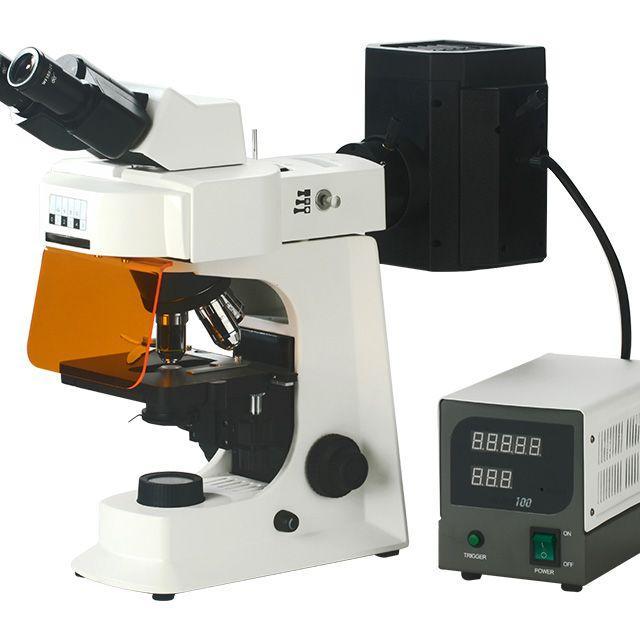-
110 Postari
-
1 Fotografii
-
0 Video
-
Female
-
15/10/1978
-
Urmarit de 19 people
© 2025 Scenario.press - libera espressione
 Romaian
Romaian
Recent Actualizat
-
How Do I Care for My Microscope Camera?Proper care is essential for maintaining the performance and longevity of your microscope camera. Here's a detailed guide: 1. Handling and Storage: · Gentle Handling: Always handle the camera with care. Avoid dropping it or subjecting it to rough treatment. · Clean Hands: Ensure your hands are clean and dry before handling the camera to prevent...0 Commentarii 0 Distribuiri 634 ViewsVă rugăm să vă autentificați pentru a vă dori, partaja și comenta!
-
What Factors Should I Consider When Choosing a Microscope Camera?Selecting the right microscope camera is crucial for capturing high-quality images and videos for your specific needs. Here's a breakdown of the key factors to consider: 1. Image Quality · Resolution: Higher resolution generally means more detailed images, but it also increases file size. Consider the level of detail you need for your work. · Sensor...0 Commentarii 0 Distribuiri 529 Views
-
What Are the Applications of Stereo Microscopes?Stereo microscopes are incredibly versatile tools, finding applications in a wide range of fields due to their unique ability to provide a 3D view of specimens with a comfortable working distance. Here's a detailed look at some key applications: l Industrial Inspection and Quality Control: In manufacturing, stereo microscopes are indispensable for inspecting small parts,...0 Commentarii 0 Distribuiri 656 Views1

-
What Are the Key Features of a Stereo Microscope?Stereo microscopes are designed to provide a three-dimensional view of specimens, making them ideal for a wide range of applications. Here are some of their key features: l 3D Viewing: This is the most prominent feature. Unlike compound microscopes that provide a flat, 2D image, stereo microscopes utilize two separate optical paths, one for each eye. This creates two...0 Commentarii 0 Distribuiri 551 Views
-
What Are the Advantages of Using a Polarizing Microscope?Polarizing microscope offers several distinct advantages over conventional light microscope: Enhanced Contrast: l Reveals details in transparent or translucent specimens that would be otherwise invisible. l Birefringent structures appear bright against a dark background, making them stand out clearly. Material Identification: l Allows for the...0 Commentarii 0 Distribuiri 669 Views
-
What Are the Key Components of a Polarizing Microscope?A polarizing microscope is a specialized instrument with several key components that work together to manipulate and analyze light, revealing the optical properties of materials. Here's a detailed look at each component: Light Source: l Provides the initial illumination for the specimen. l Often a halogen lamp or LED, but can be any source that emits sufficient...0 Commentarii 0 Distribuiri 664 Views
-
When Should I Use an Inverted Microscope?Inverted microscopes are the ideal choice for a variety of applications where: Working with Larger Samples: You need to examine specimens contained within larger vessels such as: l Petri dishes: Observing bacterial colonies or cell cultures. l Flasks: Examining microbial growth in liquid media. l Multi-well plates: Studying cell behavior...0 Commentarii 0 Distribuiri 887 Views
-
Why Use an Inverted Microscope?Inverted microscopes offer several key advantages, making them the preferred choice for specific applications: Working with Larger Samples: Inverted microscopes excel when examining specimens in larger containers such as: Petri dishes Flasks Multi-well plates Tissue culture dishes The design allows for easy accommodation of these containers on the stage, enabling...0 Commentarii 0 Distribuiri 927 Views
-
How to Prepare a Sample for Metallurgical Microscope?Proper sample preparation is crucial for obtaining high-quality images with a metallurgical microscope. The process typically involves the following steps: 1. Cutting: The sample material is cut into a suitable size and shape using a saw or abrasive cutting wheel. Care must be taken to avoid introducing heat or stress that could alter the microstructure. 2. Mounting: The...0 Commentarii 0 Distribuiri 950 Views
-
What are the Key Components of a Metallurgical Microscope?A metallurgical microscope is a specialized type of microscope designed to examine opaque materials, primarily metals and alloys. It uses reflected light to illuminate the sample's surface, unlike biological microscopes that transmit light through the specimen. Here are the key components: l Light Source: A powerful light source, often a halogen or LED, is crucial for...0 Commentarii 0 Distribuiri 996 Views
Mai multe povesti



